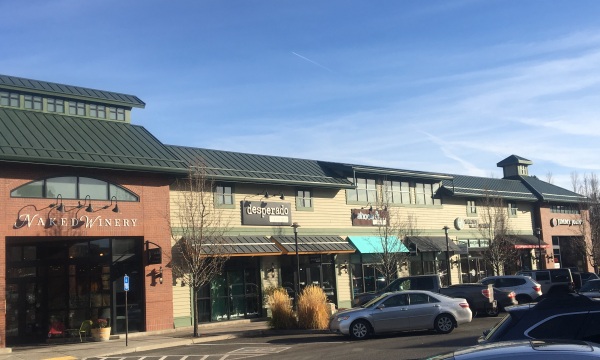The Bottom Line
Small business is important to Central Oregon, and to Mid Oregon. Find tips and resources for business, and information about Mid Oregon’s commercial services and business members.

The ABCs (and Ds) of Medicare
Free workshop: Understanding the ABCs (and Ds) of Medicare
Do you have questions about Medicare? Mid Oregon Credit Union invites the community to its free financial workshop, Understanding the ABCs (and Ds) of Medicare. The workshop is scheduled for Thursday, October 11, 2018 at 6:00–7:30 p.m. at Mid Oregon’s East Bend Conference Room.
Do you know the differences between Medicare Part A, Part B, Part C—and Part D? Featured presenter Emily Carrick, Medicare Sales Executive at PacificSource, will show you who’s eligible, what’s covered, what’s not, and the key enrollment timelines you need to know. She’ll also explore the differences between Medigap plans and Medicare Advantage plans.
Medicare from A to Z
Topics include:
• Medicare, Medicaid, SSA definitions
• What is Medicare Part A, B, C, and Part D
• What is covered, and not generally covered by Medicare
• Options for extra coverage
• How to enroll
• Enrollment timelines, including the new Medicare Open Enrollment Period coming in 2019
• Low income subsidy program
Where to Go, and How to Register
The Mid Oregon Credit Union East Bend Conference Room is upstairs at 1386 NE Cushing Drive (off of 27th). Seating is limited, so please call 541-382-1795 or email info@midoregon.com to reserve your seat. Light refreshments will be available. This workshop is provided for educational purposes only, and is not a sales presentation.

Tap Your Home’s Equity
If you need cash to remodel your kitchen or bath, a home equity loan or home equity line of credit (HELOC) might be your best bet. Generally, financing involving your home is a lower cost form of borrowing than other options such as credit cards or personal loans. With the higher home prices in Central Oregon this year, your home’s equity might provide the resources that can be used for a variety of your needs.
Home Equity Loans
These loans let you borrow money using the equity in your home as collateral. Unlike almost any other consumer loan type, the interest on a home equity loan or HELOC of $100,000 or less is likely to be tax-deductible ($50,000 if married filing separately).
With a home equity loan, you borrow a lump sum of money repayable over a fixed term, usually 5 to 15 years, giving you the security of a locked-in rate and a consistent monthly payment.
Home Equity Line of Credit
A HELOC (Home equity line of credit) is much like a credit card or any other type of open-ended credit. You can borrow money as needed, up to the credit limit your lender assigns, by making a transfer into your checking account. A HELOC is usually a variable-rate loan, so your monthly payments will change based on your outstanding balance and fluctuations in the prime rate.
Getting Started
Before doing any kind of borrowing, you should understand about your options and the consequences of your decision. We recommend you read a great informational piece from The Federal Reserve Board, What You Should Know About Home Equity Lines of Credit before you apply.
Talk to the home loan specialists at Mid Oregon Credit Union today for more details about our home equity loan products. Contact us today online at midoregon.com, through email to info@midoregon.com, on the phone to (541) 382-1795 or stop in at one of our seven convenient Central Oregon branches.
For more information about Mid Oregon Home Equity Loans, visit https://www.midoregon.com/loans/home-equity.shtml.

The Best Time to Buy Your Favorite Products
Stores and manufacturers like to offer deep discounts on certain popular products at specific times of the year. If you love a good sale (and who doesn’t?), time your purchases so you can take full advantage of these traditions. Generally there is a best time to buy your favorite products. The following list shows the best month to find the best prices on popular items:
January – Sales revolve around New Year’s resolutions about getting in shape, or people looking for items to keep their home’s interior cozy during the cold winter.
⇒ Fitness products, TVs, electronics, bedding and linens
February – Comfy interiors continue to be high priorities on everyone’s To-Do list. People in the Northern states also need to deal with ice and snow.
⇒ Mattresses, humidifiers, interior paint, snow blowers, winter apparel and sporting equipment
March – Many are planning kitchen renovations. It’s also time to introduce new models for digital cameras.
⇒ Countertops, space heaters, digital cameras
April – Spring cleaning is on everyone’s mind, for the interiors and exteriors of their homes.
⇒ Vacuum cleaners, lawn mowers, tractors, air purifiers
May – Time to begin sprucing up the exterior of homes and after a hard-day’s work, enjoy a good barbeque!
⇒ Roofing, siding, and decking materials, gas grills
June – Summer begins, and many people can now really work on the exterior of their homes.
⇒ Pressure washers, cordless drills, string trimmers, smartwatches
July – Hot and humid, so you’ll find appliances to keep yourself dry, cool, and clean.
⇒ Dehumidifiers, laundry machines, dish washers, refrigerators
August – It’s Back-to-School season, so you’ll find the best prices for pricier school supplies.
⇒ Laptops, headphones, printers
September – You’ll find items to help to clean up your house, inside and out.
⇒ Leaf blowers, washers, dryers
October – Time to check or replace smoke detectors and get ready for winter.
⇒ Smoke detectors, snow blowers, interior paint
November – A favorite month for Shopaholics because the biggest discounts are offered, starting with Veteran’s Day and ending with Black Friday and Cyber Monday.
⇒ Blenders, coffee makers, fitness trackers, TVs, refrigerators
December – The biggest gift-giving season heralds multiple sales on nearly everything through the entire month. It’s also when car dealerships try to meet their end-of-year sales quotas.
⇒ Headphones, wireless speakers, fitness trackers, cordless drills, smartwatches, automobiles
